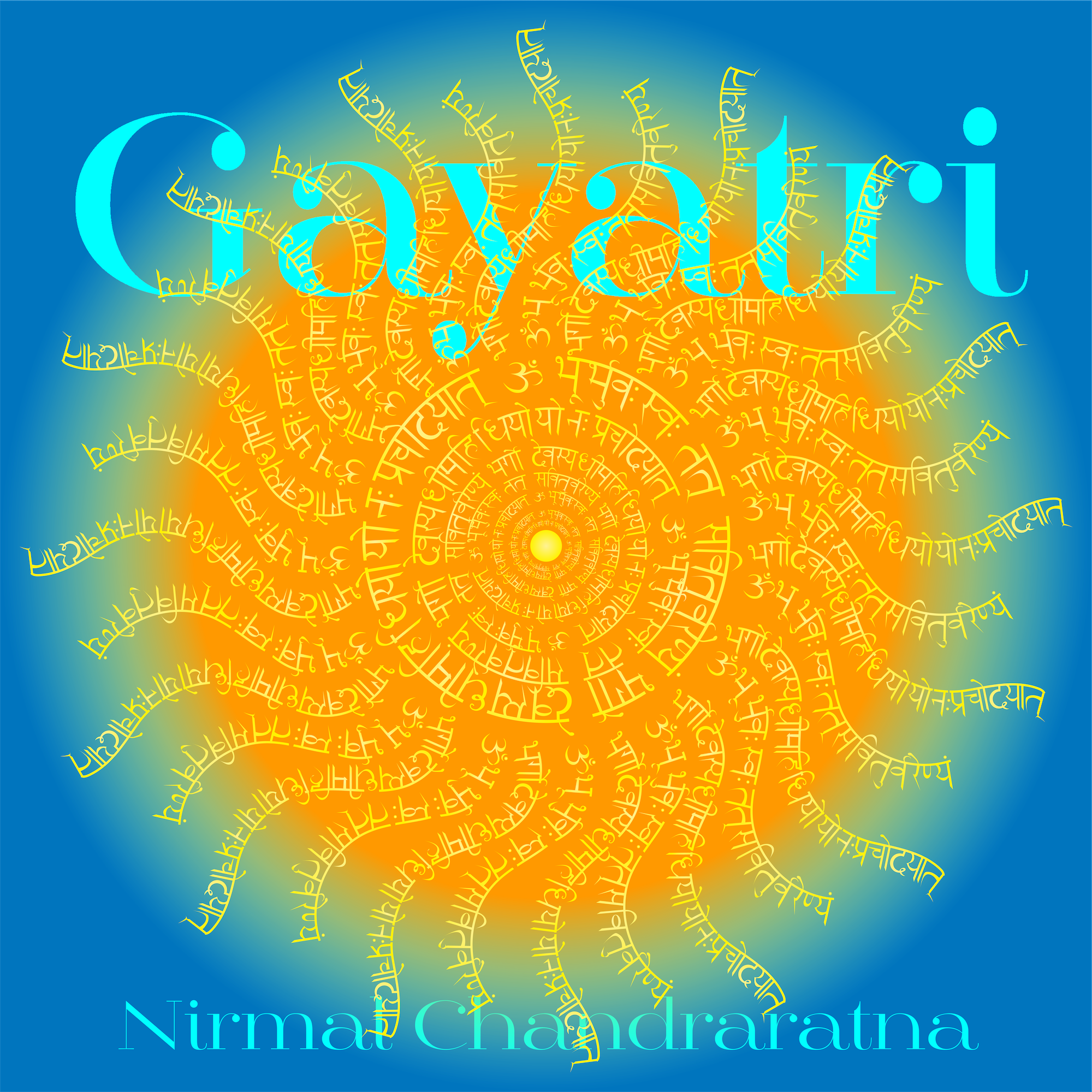

OM bhur bhuvah swaha
tat savitur varenyam
bhargo devasya dhimahi
dhiyoyo nah prachodayat
Hail to the Sun
Radiating beauty all around you.
And blessings to the Moon
Offering her solace in the dark of night.
Peace to the Earth
Basking in the glow
Of a Love that moves the Sun and all the other Stars.
O Holy Spheres,
Help us Remember
Who we are
Who we really are.
(Background vocals: Aham Prem)
When you see the Sun, be Love,
When you see the Moon, be Love
As You Walk the Earth, be Love,
When you see me, be Love.
As you live and breathe, be Love.
Hail to you,
Divine Emanation of Beauty
And blessings to your loved ones,
Kindred Spirits in Space and Time
Basking in the glow
Of a Love that moves the Sun and all the other Stars.
O Holy Spheres,
Help us Remember
Who we are
Who we really are.
(Background vocals: Aham Prem)
When you see the Sun, be Love. . .
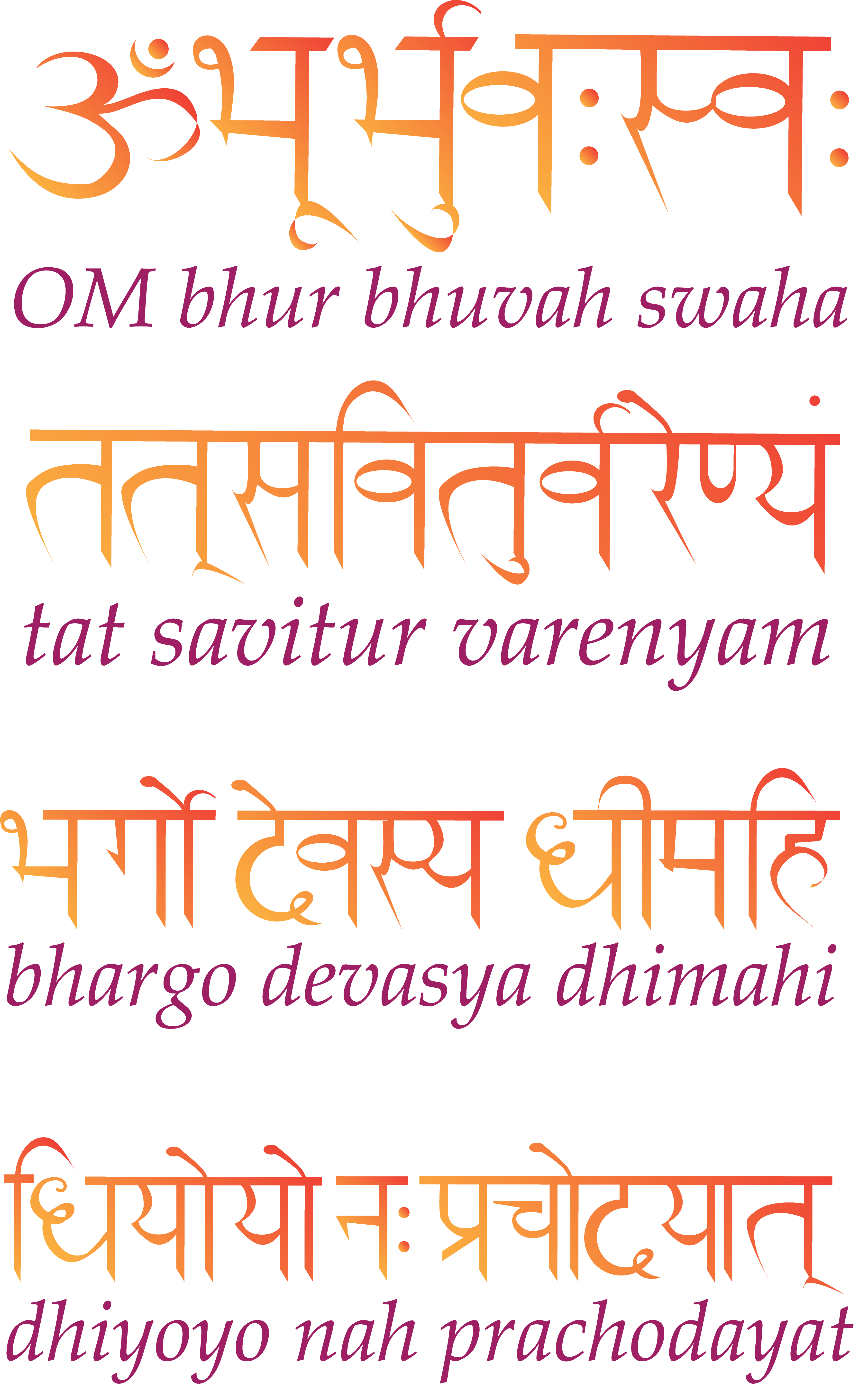
We meditate upon the brilliant light of that divine Sun, so that He may illuminate our minds.
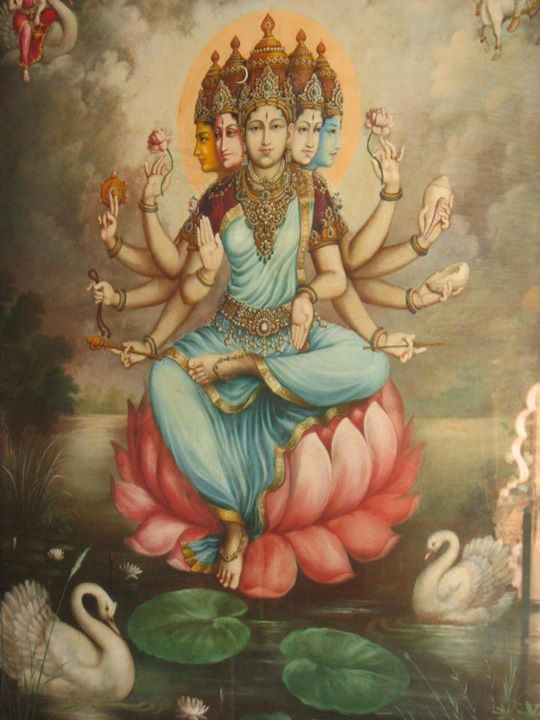
The Gayatri Mantra was first put into written form in the Rigveda, one of the oldest known sacred texts of India, dating back to between 1700 and 1100 BC. The Rigveda is a collection of mantra to a wide range of deities, many of whom were replaced by more modern deities. Surya today has replaced Savitri, the sun god mentioned in the Gayatri mantra.
However, the mantra itself has been continuously recited since time immemorial. The name Gayatri here refers to a type of meter of three lines consisting of eight syllables each. There are actually many Gayatri mantra — at least one for all of the well–known devas— but THE Gayatri mantra refers to this particular verse.
The first line is not actually part of the mantra proper, but is composed of what are called mahavyahritis. They are prescribed introductory mantra to precede the mantra, and here they refer to three of the seven worlds: earth, sky and heavens.
Gayatri, who is depicted in the image on the left, is also the name of the goddess who is the personification of the mantra.
Aham Prem
 I am Love
I am Love
I wanted to compose a song that reflected the course of one's day from morning to evening, and how we can infuse that time more attuned to being in loving awareness. The Gayatri mantra is a wonderful vehicle for that practice. After all, our bodies are aware of the presence of the sun everyday, so it makes sense to associate love with the sun. Initially, I had associated the mantra with wisdom: the illumination the sun provides is an apt metaphor for the light of wisdom. And then I heard a beautiful quotation from the last lines of Dante's Divine Comedy that included the line: "Love that moves the sun and all the other stars."
What a beautiful notion: that the prime mover of the universe is Love. And so it made sense to me that each time we look upon the sun, we may be reminded to love. And we can extend that practice when we look upon the moon, and when we walk the earth. . . and hence the lyrics to the song.

(Lyrics are in Sanskrit)
Ya devi sarva bhuteshu
Shakti-rupena samsthita
Namastasyai namastasyai
Namastasyai namo namaha
He Ma Jagatambe
Translation:
To the Goddess who is in all beings in the form of power,
I bow to her,
I bow to her,
I bow to her,
I bow,
I bow.
Hey, Mother, Mother of the World
subsequent verses change:
shakti (power)
buddhi(intelligence)
shraddha (faith in the Higher Self)
kanti (beauty)
daya (kindness)
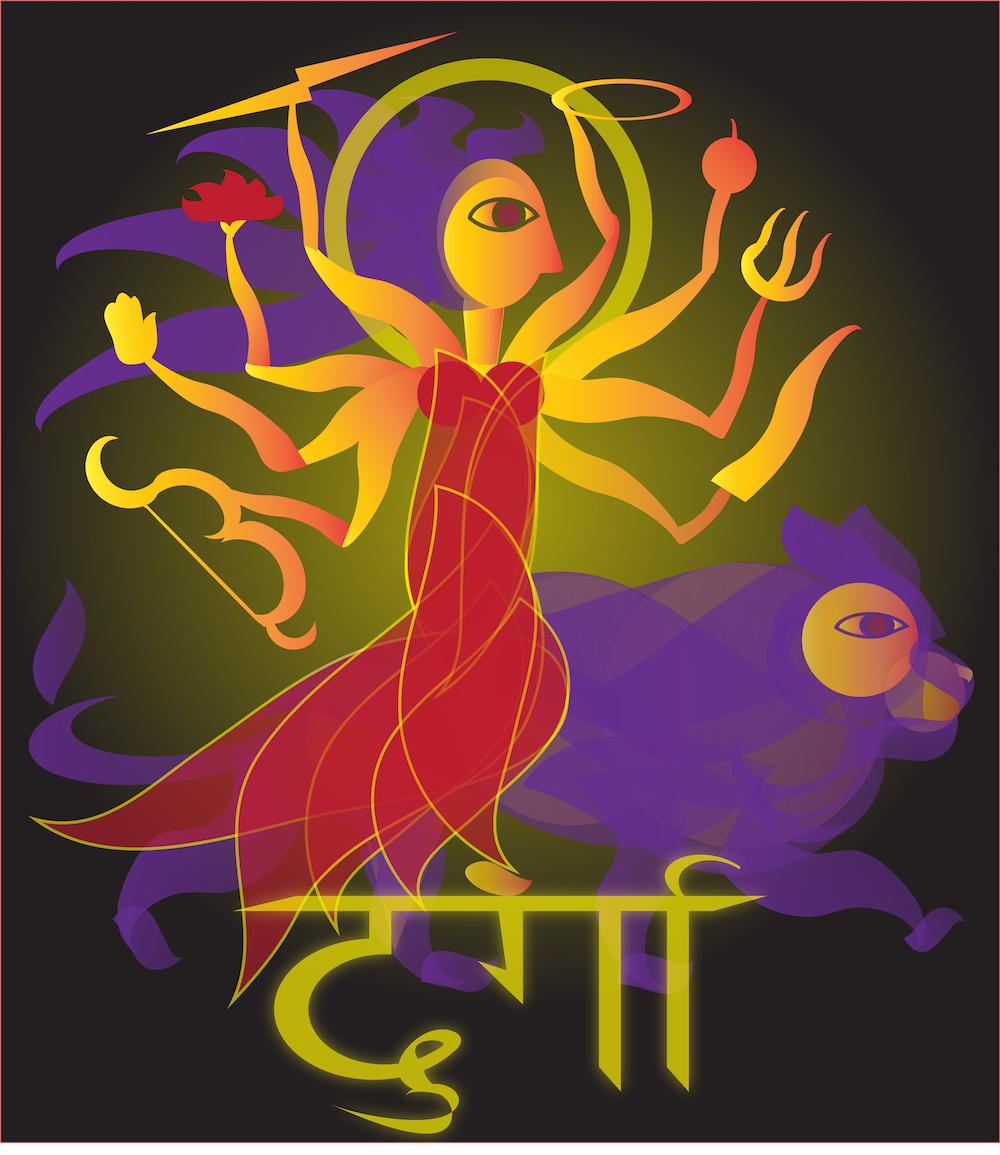
He Ma Jagatambe
 O Divine Mother, Mother of the World
O Divine Mother, Mother of the World
In some sects of Eastern thought, the Divine Feminine is considered the supreme guiding principle of the universe. In Shaivism, that being is Shiva; in Vashnaivism, he is Vishnu, and in Shaktism, she is the Goddess. It's fascinating to note that all Goddesses are aspects of Shakti, feminine power: Tara is the compassionate aspect, and Kali is the fierce aspect, with endless diversity. Furthermore, all the deities, are illusions of separation in what is known as Atman, or the Universal Self, so we have these multilayered modes of of contemplating and appreciating the nature of existence through these mantra.
In the bridge of the song, the Mahavidyas are invoked: 10 wisdom Goddesses worhsipped in Shakti and Tantric traditions. They are:
Kali, Devourer of Time
Tara, the Compassionate
Lalita Tripura Sundari, the Beautiful One of the 3 Worlds
Bhuvaneshwara, Mother of Being
Bhairavi, the Awe-Inspiring
Chhinnamasta, the Ego Destroyer
Dhumavati, the Widow
Bagalamukhi, who takes down enemies
Matangi, the Creator
Kamala, the Lotus
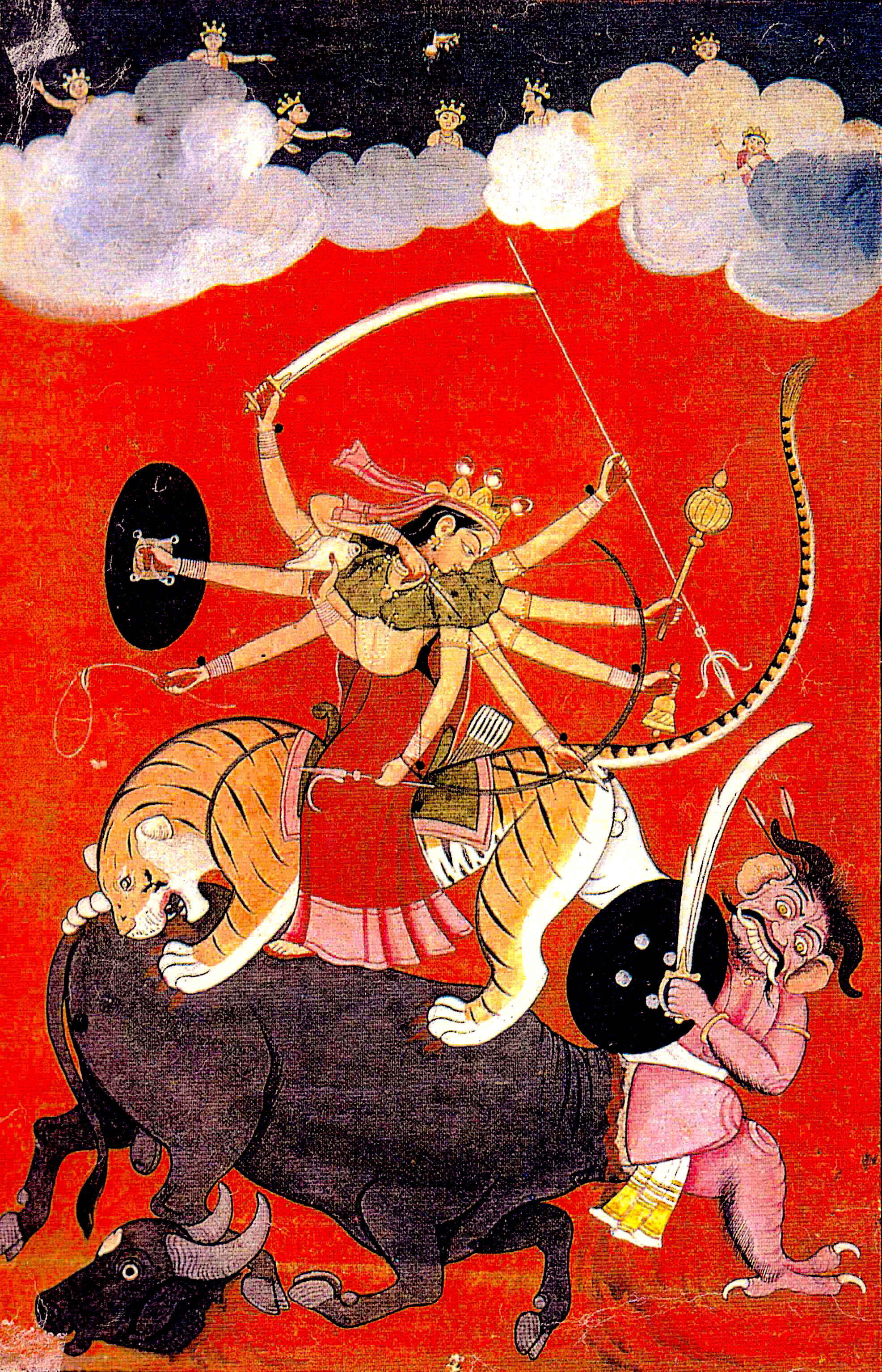
The verses of this song come from the Devi Mahatmya, a section of a larger ancient text called the Markendaya Purana. Here's the gist:
The earth was being ravaged by Mahishasura the Buffalo Demon, who was granted the boon that he could not be killed by any masculine being. As the demon continued on his rampage, Indra summoned Brahma, Vishnu Shiva, and all the other devas to figure out a solution, but all they could conjure was anger. As their anger grew, light began to concentrate in the center of their circle and took the form of the protector goddess Durga, whose name means invincible. The devas gifted her with their weapons and with a lion as her vehicle.
As it is with chauvinists, Mahishasura underestimated the Goddess, thinking he closed all the loopholes with his boon that no man could kill him. But just like Eowyn in the The Lord of the Rings, she proclaimed, "I am no man!" And kicked that egomaniac of the island. In the afterglow, the devas sang the praises that make up the verses of this song.
|
I send out a newsletter about once a month with information about the latest recordings, designs and live events, as well as recommendations for music and reading. |
|
Email: Chandraratna@gmail.com